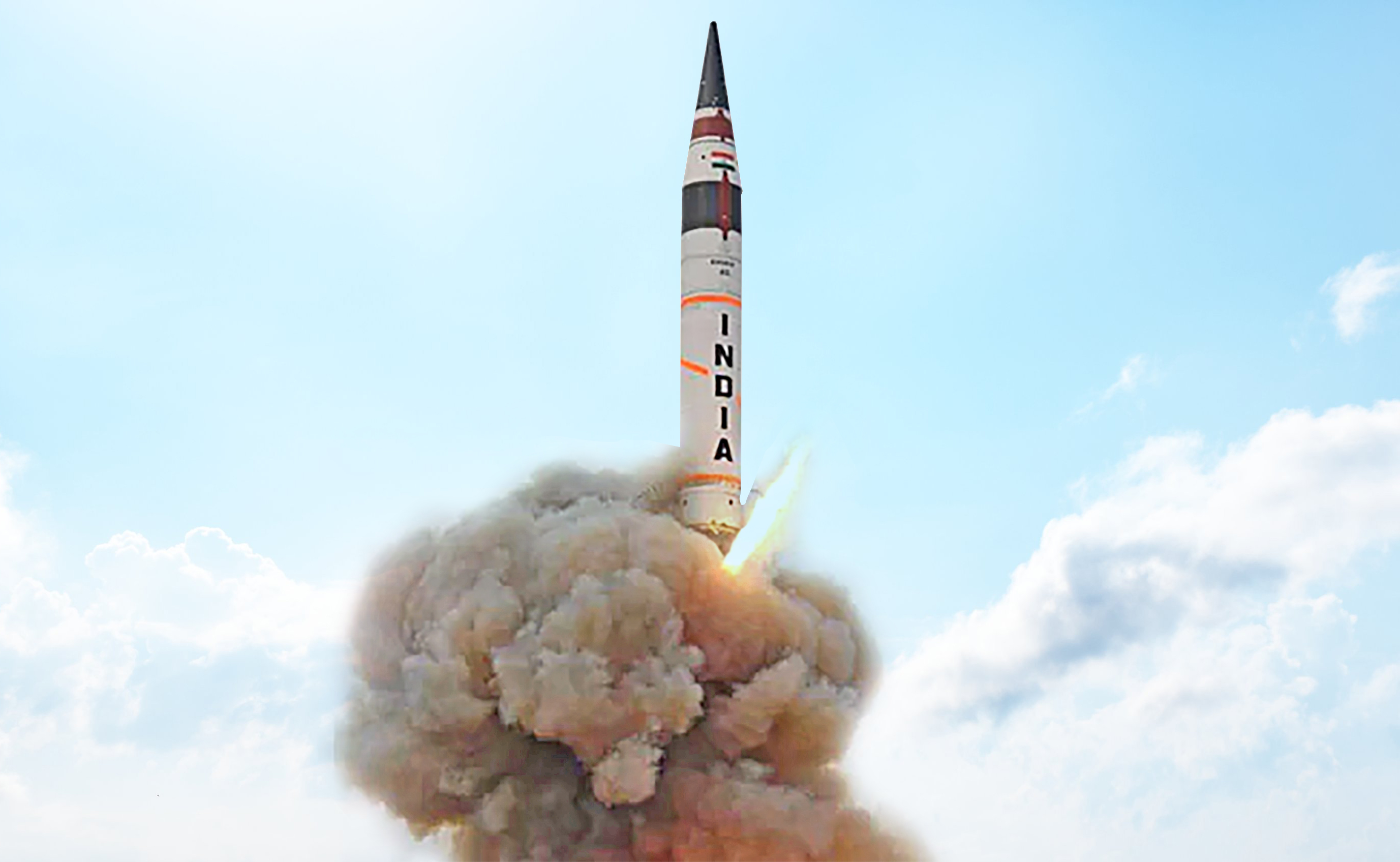
Source:NDTV
Tanzeela Khalil
Agni V is India’s longest range, 5000 km, solid fuel propelled Inter-Continental Ballistic Missile (ICBM) which has been regularly tested every year since 2012. The only year it was not tested was in 2017. Unfazed by the Indian testing of an ICBM capability, Lisa Curtis of the Heritage Foundation stated, “the lack of U.S. condemnation of India’s latest missile test demonstrates that the U.S. is comfortable with the Indian progress in the nuclear and missile fields and appreciates India’s need to meet the emerging strategic challenge posed by rising China.” It is not a shocker since U.S. sees India as a major global partner and the Indo-U.S. strategic partnership is likely to continue as it serves U.S.’ interest of countering China in the region.
The non-testing of Agni V in 2017 was aligned with the Indian bid for the membership of the Nuclear Suppliers Group – an export control regime regulating the nuclear trade. India’s state-friendly media reported that India deliberately exercised ‘strategic restraint’. However, India has still not become a member of the NSG and its nuclear modernization is far from achieving any semblance of ‘strategic restraint’. It appears that the Indian membership of three out of four export control regimes has emboldened it not to worry about the consequences anymore. This understanding by India is further compounded by its learning from history where it has hardly faced any consequences for its proliferation beginning from its first test in 1974. Several reports suggest that initially India deliberately understated the range of its BrahMos at 290km in order to evade the radars of Missile Technology Control Regime (MTCR) – a group regulating exports of missiles to prevent proliferation. Shortly, after its membership of the MTCR in 2016, India tested the same missile with an enhanced range beyond the MTCR’s stipulated thresholds of approx. 300-400km in July 2018. This pattern of deceit suggests that one should not trust even the Indian commitment to non-testing since this restraint is only until it becomes a member of the NSG, the very club which was created in reaction to the Indian nuclear testing in 1974.
On the face of it, India is associated with several multilateral nuclear non-proliferation and disarmament regimes and continues to express support for universal and non-discriminatory global nuclear disarmament. However, there is nothing India has done practically to translate its verbal commitment into words. In fact, the current upward trajectory of the Indian nuclear and missile developments suggests otherwise.
The latest test of Agni-V was conducted by India’s Strategic Force Command (SFC) using a canister based launch system on 4 June 2018 which is an indication that the missile is being readied for induction. Canisterizaiton further suggests mating of the warhead and the missile providing a desirable launch time in high state of readiness. Former Defence Research and Development Organization (DRDO) Chief, Avinash Chander’s, statement about his mandate to reduce Indian response time from hours to minutes is achievable now. This is a clear departure from India’s earlier known policy of keeping the warheads and missiles in a de-mated form. Some reports suggest that like Brahmos, India is also understating the actual range of Agni-V and that the actual range could well be around or over 8000 km. While the Chinese and the Pakistanis are equally alarmed by Agni-V, Indian ICBM raises concerns at the global level as well since it is capable of hitting targets as far as Australia and Europe.
Canisterization, MIRVing, shift from liquid to solid fuel missile inventory, ready arsenal and less response time are indicative of modernization in nuclear arsenal augmenting assertive control. Indian inventory of nuclear delivery systems indicates that India has options for use both in counter-force and counter-value settings. While the long-range Agni missiles may be used for counter-value strikes, the short-range missiles like Prithvi, Prahaar, Dhanush and Brahmos can be used for counter-force strikes especially aided by India’s increasing I2SR (Intelligence and Information, Surveillance and Reconnaissance) capabilities. All of this represents offensive posturing which is reflective of a visible shift in India’s nuclear doctrine. The U.S. and the West are apparently comfortable with these destabilizing strategic developments in South Asia since it serves their purpose to groom India against the rise of China with whatever means available. However, Pakistan cannot take Indian nuclear doctrine on its face value and ignore these visible shifts. It therefore has some compelling choices to make to maintain strategic stability in the region.
Tanzeela Khalil is an independent researcher.




